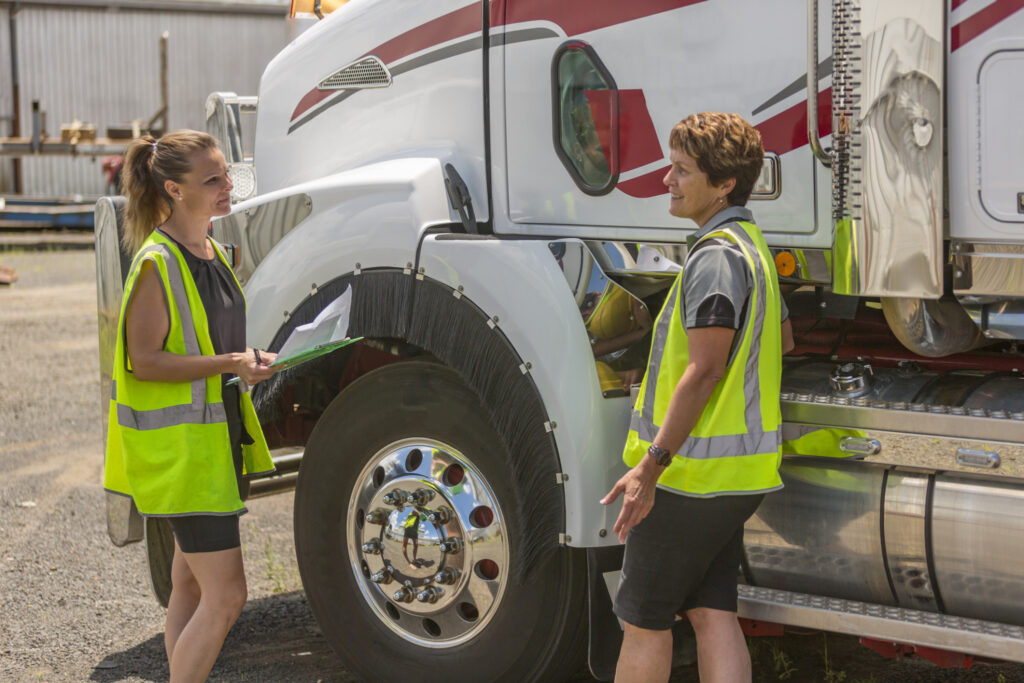Three things fleets are doing well (and two they aren’t)
The Truckload Carriers Association’s (TCA) annual Best Fleets to Drive For competition offers a unique window into emerging trends within the top fleets to work for in the U.S. and Canada.
The exhaustive surveying and interviewing process fleets in the program are put through by judges, a team employed by online training firm CarriersEdge, reveals new trends each year that are likely to become more prevalent across the industry as a whole. Trucknews.com interviewed Mark Murrell and Jane Jazrawy of CarriersEdge to find out what stood out this year when judging Best Fleets to Drive For.
Technology & communication
Technology is ubiquitous among the Best Fleets nominees.
“Everyone has cameras,” says Jazrawy. “Everybody is using technology to get warnings about drivers’ activities and then calling and coaching them.”
It’s that coaching and communications element, however, that separates the best fleets from the rest. Some generate scorecards, but don’t share them with the drivers. Some don’t follow up on alerts generated by the onboard technologies.
The top fleets, adds Murrell, solicit feedback from drivers on the technologies they deploy, and how they’d like it to be used. Jazrawy adds the best fleets close the loop between deploying technology and using it to improve the driver’s performance.

Women drivers increasing
This year, judges noted a jump in female driver representation among nominated fleets. Previously, most nominated fleets had female representation of about 3%. Those with higher numbers operated teams, which was attractive to husband-wife duos.
“In 2018-2019, it was mostly team drivers,” Jazrawy says of women in the industry. “If you had women, you had teams. That’s where the bulk of the women were coming from.”
She noticed a change this year, with more solo drivers taking to the highway. The average representation of women among the nominated fleets climbed from about 3%, to 5-6% this year, Jazrawy says.
She adds the fleets that are successfully increasing their female driving force aren’t doing so by accident. They’re hiring more female trainers, ensuring women are represented on committees, and even catering to mother-daughter teams.
There are also more women coming in as entry-level drivers, giving fleets with good driver development programs an edge in recruiting them.
Focus on mental health
Before the Covid-19 pandemic threw everyone’s life into turmoil, very few fleets offered support programs specific to mental health. That has changed this year, Jazrawy notes.
“Nobody seemed to be doing anything about it [pre-Covid],” she says. “This year, the words ‘mental health’ appeared more than at any other time.”
More fleets are offering employment assistance plans including offerings such as telehealth and the ability to call a dedicated line for mental health support and counselling when needed. Others are doing regular check-ins with drivers.
“Fleets are calling drivers to see how they’re doing,” Jazrawy says. “Executives do it, not just driver services.”
Surveys are also being used to monitor the mental health of drivers, she adds.

Cybersecurity? What cybersecurity?
When it comes to areas with room for improvement, Murrell says he’s alarmed so few fleets have programs in place to protect against cyberattacks.
“Sadly, there’s still not much happening there,” he says about fleet preparedness. “That’s one we watch, because it’s not going to be a great company to work for if it’s shut down with a ransomware attack.”
Any education around cybersecurity tends to focus on office staff, and excludes drivers, adds Jazrawy. “The office has cybersecurity training and firewalls and security – the drivers don’t need that? It doesn’t occur to them if they’re offering training to internal staff, to offer it to drivers too. They’re still using the Internet and it’s helpful for them to be able to recognize these problems.”
Disaster assistance
With the increased frequency of natural disasters and extreme weather events, Murrell also feels fleets lack preparedness in how to assist drivers affected by such disasters. Their immediate response is to reroute drivers away from the imminent danger, but Murrell contends that’s not enough.
“What happens if the driver’s house is flattened, or flooded?” he asks. “They haven’t gone to the next level in a lot of cases. The few that did it well are thinking about what to do for the driver specifically, and not just how they route them away from the bad weather.”
Jazrawy adds most fleets have a disaster plan in place for the office and office-based workers, but few consider the driver’s needs while they’re on the road and away from home.
Have your say
This is a moderated forum. Comments will no longer be published unless they are accompanied by a first and last name and a verifiable email address. (Today's Trucking will not publish or share the email address.) Profane language and content deemed to be libelous, racist, or threatening in nature will not be published under any circumstances.
They say there is a shortage in trucking but there is not it company’s letting them tell who and who not they can hire
Trucking has gone down hill since the 90s because there is to many plow jockeys and theses ones who own their truck you watch them on the weekend do their own repairs
I have and always will pull trucks in to the scale and had the plates removed
I been driving since the 80s and seen how it changed for the worst
The MTO should make it ease for driver’s and when our licenses come up for renew we pay 500 for 5 years in stead of writing it because then we go stop any where and renew it instead of have to loose as few days haven to write it